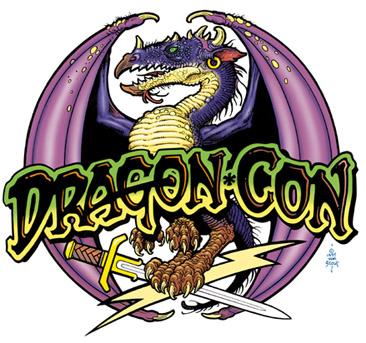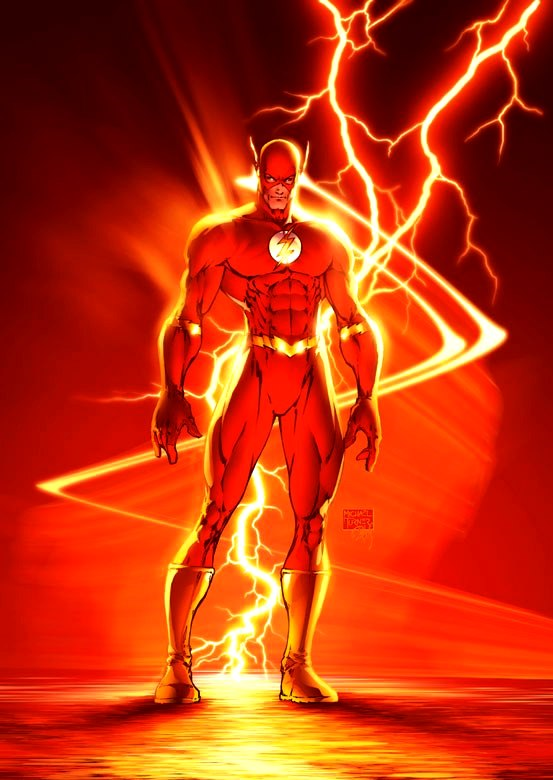 Click Here for episode 3
Click Here for episode 3
Hermes and Hekate get into a bar brawl that ends up with them having to explain themselves to a higher authority, and in return they get a better idea of what is really going on.
visit the shows main page here

 Click Here for episode 3
Click Here for episode 3
Hermes and Hekate get into a bar brawl that ends up with them having to explain themselves to a higher authority, and in return they get a better idea of what is really going on.
visit the shows main page here
At this year’s Norwescon I managed to find myself an unexpected panelist. The subject of the panel was the creepypasta phenomena, with a focus on the Slender Man. Only one panelist was on time and she admitted that her knowledge of the subject was limited. As I had written on article on the Slender Man before, and did a lot of research, I offered up the history of the character. I remained on the panel even after one of the other panelists showed up 20 minutes later.
It dawned on me as we sat there that even though I had covered the subject of the Slender Man fairly well in this blog, I had not really touched on the other members of the creepypasta universe. So let’s take this time to do an overview of the wonderful and unnerving world of the creepypasta.
First what is a creepypasta? The term is derived from another bit of internet slang called copypasta, which refers to any text that is copied and pasted over and over again, such as kids with cancer collecting postcards, which is how many memes get started. A creepypasta in contrast is a story created on the internet that is meant to be disturbing, shocking, or outright scary. Go back and read my articles on urban legends, as these stories have similar properties and sometimes end up crossing the line by being presented as one. At the panel we agreed that basically a creepypasta is any ghost or horror story that originates on the internet and uses the internet itself as part of the storytelling medium, usually by becoming memes.
There doesn’t seem to be any hard rules about what makes a creepypasta. So let’s look at the more popular ones to get a feel for them. These are just going to be brief overviews.
Of course the granddaddy of them all is the Slender Man. I wrote about him before so I will refer you to that article for details. What I will add is that this character has gotten so popular and immersed in our culture that he is losing some of his bite. I regularly see people cosplaying as him at conventions. There are parodies now, including Splenderman. Add to that a number of movies either ripping off the story or using him outright, and I think the mystique of the characters is getting diminished.
Going beyond Slender Man, you have certain themes that a creepypasta can fall into. The first are characters that seem to be using the same basic motif of the Slender Man, that of the boogeyman, the character that comes at you when you are most vulnerable, when you sleep.
The creepypasta most like the Slender Man is the Rake. The Rake, just like the Slender Man, can be traced back to a specific thread on 4chan. Like most creepypasta creatures, the stories about the Rake and his behavior vary from telling to telling. In most versions the Rake it is a pale, bald, humanoid creature that has feral characteristics. Usually it will crawl into a person’s bedroom at night and sit on the foot of the bed. It will than whisper to the person, often telling terrible prophesies or in some cases threats. These victims almost always meet a grim fate.
Another popular creepypasta boogeyman is Jeff the Killer. It’s a little harder to track down where Jeff came from, but odds are good he is another 4chan creation. Jeff is more in the vein of a slasher killer from the 80s. He is a pale, noseless man, with his mouth slashed into a permanent smile and his eyelids removed. He will creep into your room at night with a knife. If you wake up while he is there he will say “Go to Sleep” and if you scream he will attack. An entire origin for Jeff has been written which can be found here.
Moving on from the boogeyman, we next have the creepypasta where either something online or on a computer is itself dangerous. Again, Slender Man has aspects of this. Another one that does this is known as smile.jpeg, or smile dog. It is a picture of a dog with a sinister human-like smile. If you see the picture you will supposedly have epileptic fits in your sleep and dream of the dog telling you to “spread the word.” The only way to be free is to share the picture. This creepypasta has more than one image attributed to it, with one popular image sharing characteristics with Jeff the Killer.
Another is Lavender Town Syndrome. It tells of the original version of the game Pokémon Red and Green which introduced a supposed Pokémon graveyard called Lavender Town. In the creepypasta version, the original music for that area drove over 100 children to kill themselves and so the game had to be patched.
But the most well-known of this type of creepypasta is known as Ben Drowned, or the Majora’s Mask Creepypasta. This one tells of a YouTube user relaying his experiences playing The Legend of Zelda: Majora’s mask where he comes to believe the cartridge is haunted by a ghost named Ben. The story gets very involved, and I would prefer to not give too many spoilers. I would suggest going here to check out the YouTube videos. I would suggest not doing this at any time you would like to avoid being creeped out, as they are particularly well done.
This barely scratches the surface of the whole creepypasta phenomena. If you are interested in pursuing more I would suggest checking out a few sites. One of the best resources is the site Television Tropes and Idioms. Its creepypasta section has a good listing of the most well-known, and can give you a good list to start. There is also creepypasta.com, a site dedicated to collecting creepypasta stories. Finally I would suggest the site Know your Meme if you are just looking for a good summation of the various creepypastas, though it is best used if you already know the name of the creepypasta you want to look up.
The final conclusion we came to at the panel was that mankind has had ghost stories as long as we have been able to tell stories, and anytime a new medium is developed, people will find a way to use it to tell new ones. The creepypasta is the ghost story of the message board and the YouTube account. And as long as people like to be scared and creeped out, there will be people ready to provide these tales for them.

Dragon*Con Logo
Originally I had no intention of writing about the situation surrounding Dragon*Con and the calls to boycott it. Not that they weren’t interesting or relevant to geek culture, but others had made the same points I would and I didn’t feel I had anything new to add.
So what changed?
Recently I have been reading a lot of exchanges online about Dragon*Con and the boycott effort. The problem is that in a lot of those exchanges I have seen a lot of emotion and a casual disregard of facts. As a one-time journalism major and a fan of the @willMcAvoyACN twitter account I feel strongly that facts are important. So let us take some time here and now to look at the facts as I have been able to learn them.
Dragon*Con is a for-profit convention founded in 1987 in Atlanta, Georgia. Originally a science fiction convention, it has grown to be more of a multi-genre convention, embracing almost all aspects of geek culture. It currently boasts an attendance of approximately 52,000.
One of the convention’s founders is a man named Ed Kramer. Besides working with the convention, Kramer edited several books working with such well-known authors as Neil Gaiman, Nancy A. Collins, and James O’Barr.
In 2000, Kramer was arrested and charged with molesting three teenage boys. Due to a combination of legal actions and health issues he has yet to face trial on those charges. After the charges were made, Kramer was removed from Dragon*Con’s board and is no longer involved in running the convention; however, he retains his shares in the company. In 2009, Kramer posted a bond that allowed him travel privileges in order to attend his health needs and visit his mother. While on one of these trips in 2011, Kramer was caught in a motel room with a 14 year old boy leading to his arrest and further charges. He fought extradition back to Georgia to face the original charges. Last January that extradition went through and he is back in custody in Georgia.
The call for a boycott of Dragon*Con comes from Kramer’s status as a shareholder. Kramer owns 31% of Dragon*Con shares, which means he is entitled to profits from the convention. In 2011 those shares netted him $150,000.
The call to boycott Dragon*Con was started in January by Nancy A. Collins. Her contention is that Dragon*Con has not done enough to remove Kramer as a shareholder, and that they should dissolve the corporation and reform under another name.
In February Dragon*Con made a public statement on the matter. It pointed out that Kramer has no hand in running the convention at all since 2000. It also points out that efforts have been made to buy out his shares of the convention but Kramer responded by suing them. They also explored the option of dissolving the corporation and reforming, but that was not a possibility right now. Follow up on that last point revealed that under Georgia law, a corporation cannot voluntarily dissolve as long as there are pending legal disputes, so Kramer’s lawsuits prevent that option. Some have suggested trying to force Kramer to sell his shares, but that cannot take place until after he has been convicted, since he is presumed innocent under U.S. law until then.
So those are the facts of the case. Where does that leave us?
Based on all the above facts, there are only three factors that will prevent Kramer from receiving funds from Dragon*Con:
1: He is finally convicted, at which point new legal avenues open up for the convention
2: He dies. The man does have health issues, including the need for an oxygen tank. One of the major reasons he has not faced trial yet is the contention by his lawyers that he is not healthy enough to sit through a lengthy trial. Based on that, It’s not farfetched to presume that he does not have that long to live.
3: Dragon*Con folds. Let’s face it, if the convention dies, that would prevent Kramer from receiving any more funds from it.
This leaves us with some of the back-and-forth debate that has being going on between those in favor of the boycott and those against.
The major point that those in favor of the boycott make is that denying money to the convention ultimately denies money to Kramer. This is a straight forward point, and can’t be argued with.
The counter that is made is that a financial loss to Dragon*Con can have a ripple effect on several people, including other employees of the convention, the vendors that depend on Dragon*Con as a major source of their annual income, and local businesses like the hotels and restaurants in the area.
Also on the anti-boycott side is the claim that despite the boycott, Dragon*Con is so big that it will still turn a profit.
The counter to this is that even if that is true, the boycotters can take comfort in knowing that their money did not go to this, and thus did not support Kramer.
There have been some suggestions that the current organizers of the convention just abandon Dragon*Con and start a new competing convention.
This is a really tricky one because it looks good on paper, but falls apart in reality.
Basically it would require creating a new convention from scratch, with no access to any of Dragon*Con’s assets. They would not have the advantage of the Dragon*Con brand name, and they would need to negotiate new contracts with new convention sites. They could not use the old sites, as they have multi-year contracts with Dragon*Con.
Is it doable? Yes, of course it is.
Is it something they are likely to do? No, because the hassle would be enormous, and there would likely be new rounds of lawsuits, not only from Kramer, but most likely the hotels and other venues they have multi-year contracts with.
In the end this is not the black-and-white issue that everyone wishes it was. Every person touched by this situation is going to need to do what their conscience directs them to do.
All I ask is that when deciding what your take on it is, you keep in mind the facts.

Convention Registration line
I first encountered the term SMOF in the late eighties. I was just getting involved with actually helping run conventions and people would through the term around. Being inquisitive, I asked what a SMOF was. Based on the initial reaction I got from people you would have thought I had asked the Colonel what the elven herbs and spices were. Eventually someone took pity on me and explained that the term stood for Secret Masters Of Fandom. Basically it was a term for the elder statesmen of the convention scene. There were no real criteria for becoming a SMOF, it was basically something that was bestowed on someone based on longevity, activity, and how well-known you were in the community.
Had I not taken a decade long break from conventions I would probably be a SMOF myself.
But what does a SMOF actually do?
That can vary quite a bit. Many of them are convention organizers, so they are the people that provide the meeting ground for other fans. Others are people who were convention organizers but have stepped down, or are just very active members of the community that have been around for years. SMOFs tend to take on the role of advisers, or at least commentators on the goings-on at conventions.
So really what they do is advise, or in some cases kibitz. And recent years have really facilitated this with the advent of mailing lists and message boards.
In some cases this can be useful. These are people who have been around the block in regards to the community. On the other hand, they can be a pain in the butt, as they have been doing it forever and that can make some of them very resistant to change.
An example of this occurred recently when one convention, Norwescon, made a change to its registration process by introducing a new computerized system that would scan barcodes on printed receipts. A group on the SMOF mailing list got very vocal against this system. They did not just object to the barcode scanning; they felt that convention registration should not even use computers, since conventions were able to run registration for years and years before the advent of personal computers.
At the same time this group of SMOFs were complaining that Norwescon was not a real fannish convention because it covered “Non-Fannish” subjects such as podcasting, gaming, and film making, and ignored the “real fannish” subject of fanzines.
So clearly these SMOFs were not happy that time has marched on and fandom has evolved.
To be fair, there were other members on the SMOF list that were defending Norwescon, and saying that change is not bad.
I think it is important to remember that with a group as loosely defined as SMOFs, you cannot paint them all with the same brush. But like any group, it is the loudest members that come to define it, and for the SMOFs it is the complainers.
And this is unfortunate, because in the end most SMOFs are going to be the best resource the community can hope for. They are the people who have been in the trenches the longest. They have made the mistakes and learned from them. And those that are afraid of change are not the majority.
The trick is making sure that their knowledge is passed down to the next generation in a useful way. The best SMOFs know that bitching on the sidelines is not the way to do it. Staying engaged with the community is.
At Norwescon, there was one guy I know to be a SMOF. He has been involved with the running of Norwescon as long as I can remember, which means at least 30 years. These days he has to use a walker. But he is also still involved with the convention. When a forum was being held about a major change to the convention’s policy, he spoke up and his statement carried both the weight of his experience and the acknowledgement that a new way was needed.
This is SMOFing at it’s best.
So there you have it, the good and the ill of SMOFs. We as a community are fortunate that the good comes out on top.
Once agai n we are being bombarded by news about the nonsense surrounding the DC Comics “New 52”, both storyline-wise and the many issues with the creative staff, and dropping sales. I, like many comic fans, find myself musing about how it could be fixed. If you think the New 52 is great and does not need fixing, you might want to skip this, you aren’t going to like it very much.
n we are being bombarded by news about the nonsense surrounding the DC Comics “New 52”, both storyline-wise and the many issues with the creative staff, and dropping sales. I, like many comic fans, find myself musing about how it could be fixed. If you think the New 52 is great and does not need fixing, you might want to skip this, you aren’t going to like it very much.
If I lived in an alternate universe where I found myself able to mandate a fix to the New 52, how would I go about it? The answer lay in the very story that set the whole mess in motion in the first place: Flashpoint.
At the end of Flashpoint, Barry Allen, the Flash, has to correct a broken timeline. A mysterious figure called Pandora influences the Flash to merge the DCU timeline with the Vertigo and Wildstorm timelines to strengthen it against an oncoming threat. The merged timelines created the New 52 universe.
For the purposes of our fix let’s assume that either Pandora was wrong, or better yet, she is the oncoming threat and the merger was step one of her plan.
And no one remembers the old timeline, so there is no way to oppose her. Or is there?
The storyline in my imagined “fix” would start with a mysterious figure observing events of the New 52, much the same way Pandora appeared in the background of all the New 52 first issues. This goes on for a couple of months. Eventually the figure reveals himself as Wally West, who succeeded Barry Allen as the Flash during the period that Barry was dead.
Wally, along with prominent DC characters Donna Troy, Stephanie Brown, and Cassandra Cain were not included in the New 52 timeline. They have been exiled to a limbo outside of the timeline. After months of effort, Wally was able to use his connection to the speed force to enter the new timeline.
Wally has spent time observing the New 52 timeline to figure out what has happened. Piecing together what has happened, Wally sets a plan in motion to fix the timeline and save the world. This would be the sequel to Flashpoint.
Wally would recruit a team including Barry, Superman, and Booster Gold. They would be opposed by Pandora, who would recruit her own team to fight them by convincing them that Wally is the threat they have to fight.
The tide would be tipped by Batman, who was not as affected by the timeline change due to his own time travel misadventures caused by Final Crisis.
The result would be the separation of the three timelines (mostly) and the return of the proper DCU timeline. Some elements of the New 52 timeline would be retained, either because they would have happened anyway, or just as echoes of the merger.
This would give fans back the lost characters they have missed so much, and could be used as a jump point of more storylines, especially if Pandora survives the event as well. The event would be notable as a major crossover that does not try to prove how edgy it is by killing off a major character.
So what do you think? Would this work? If not, what are your ideas?